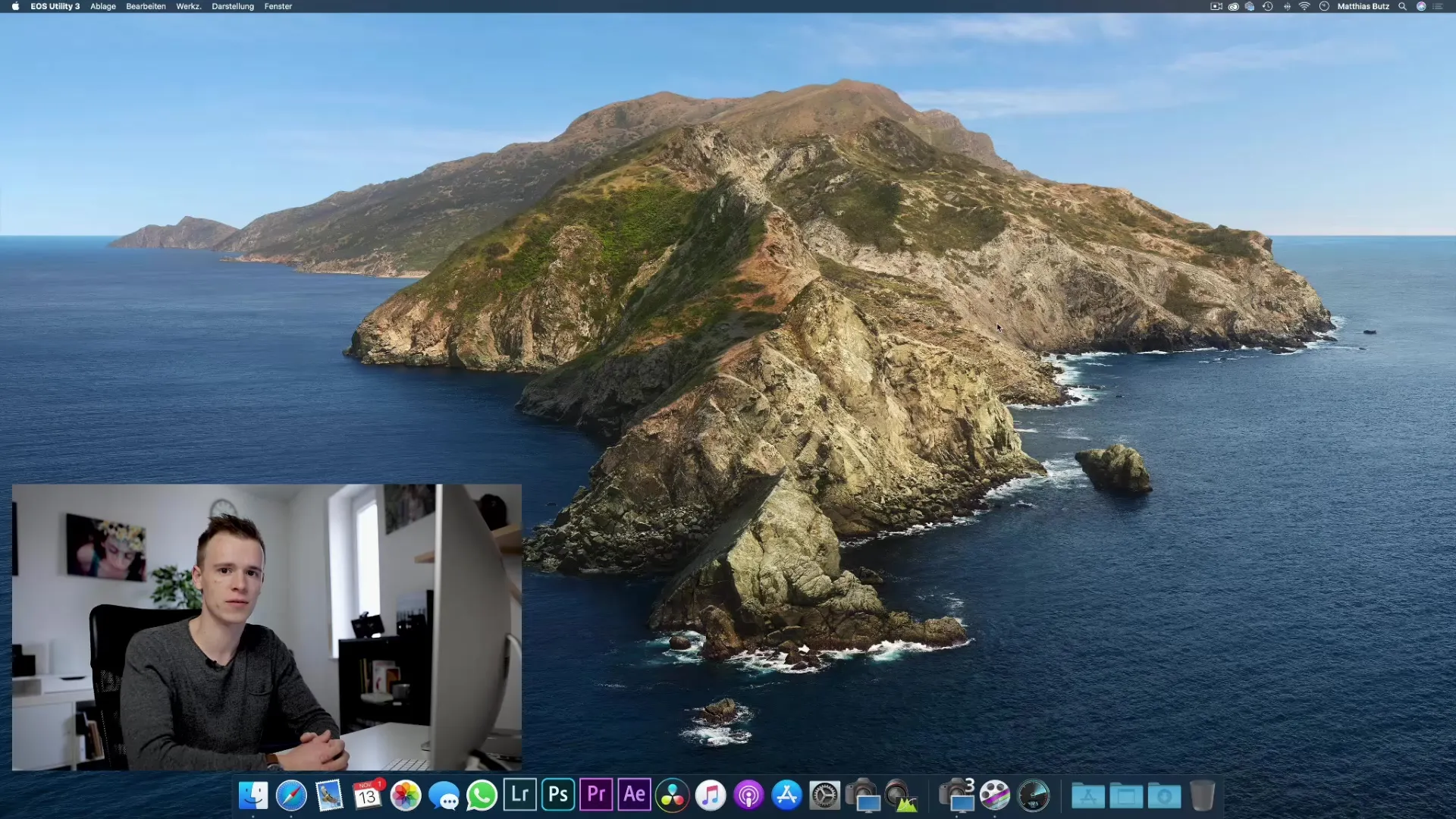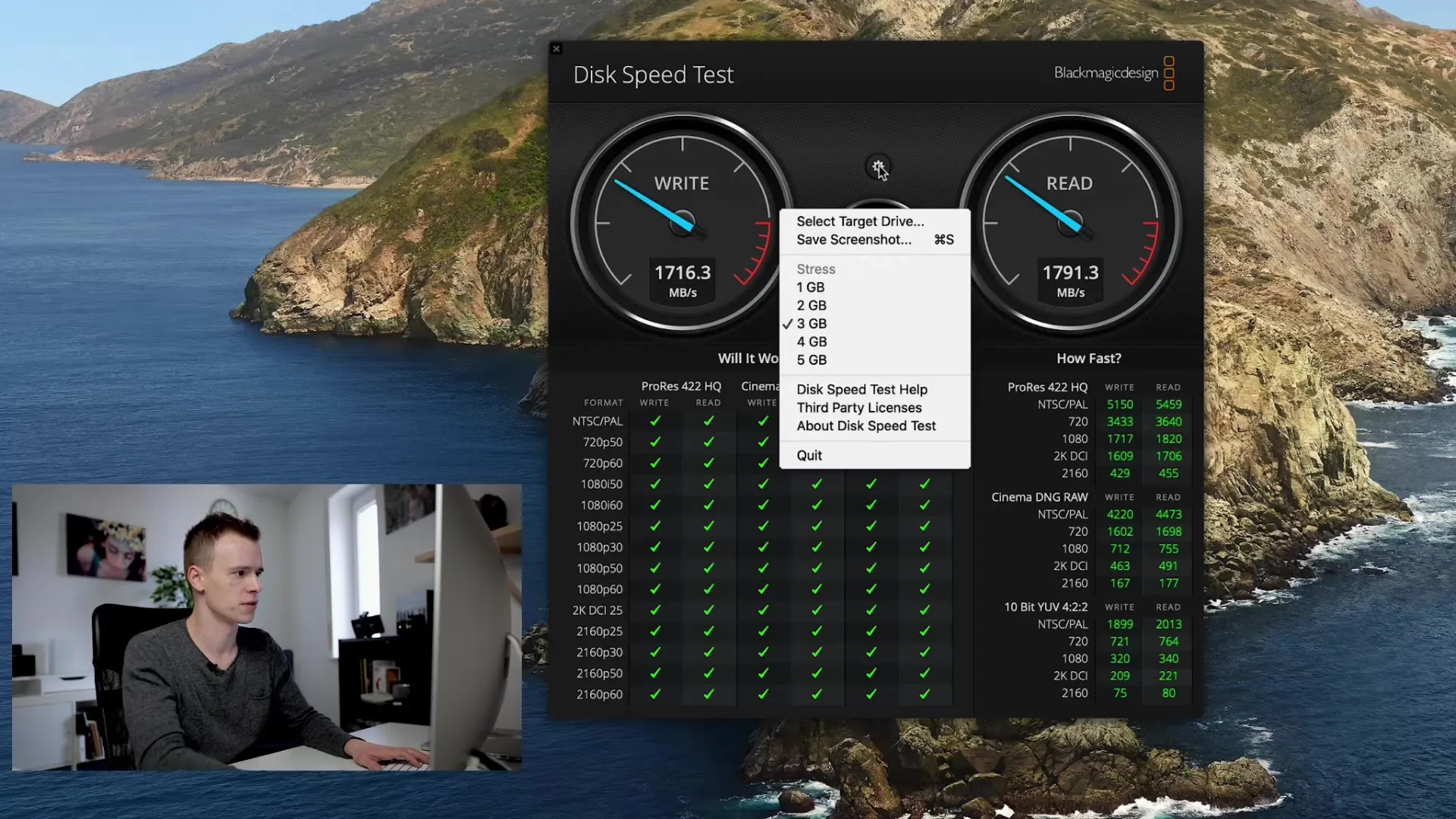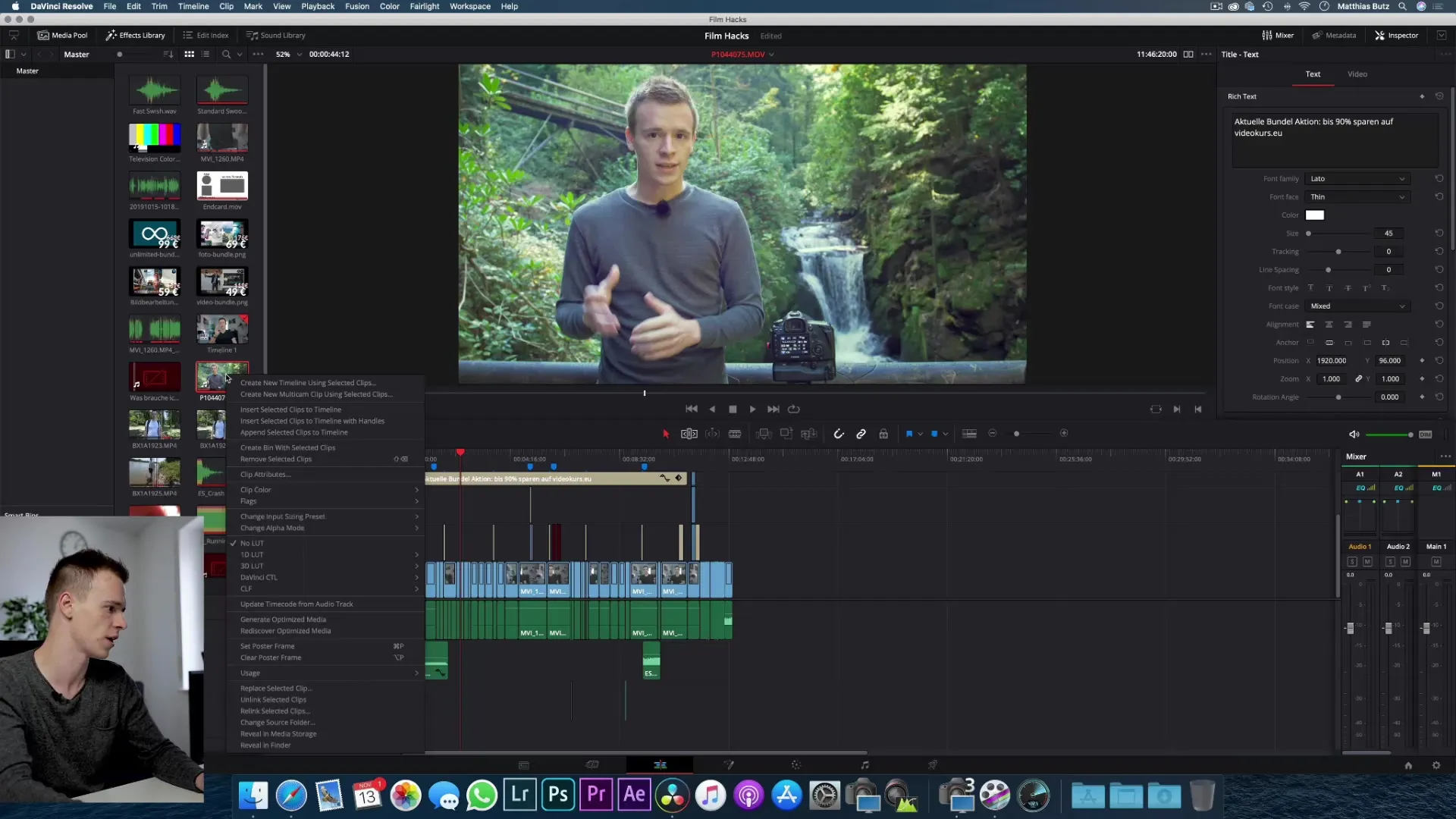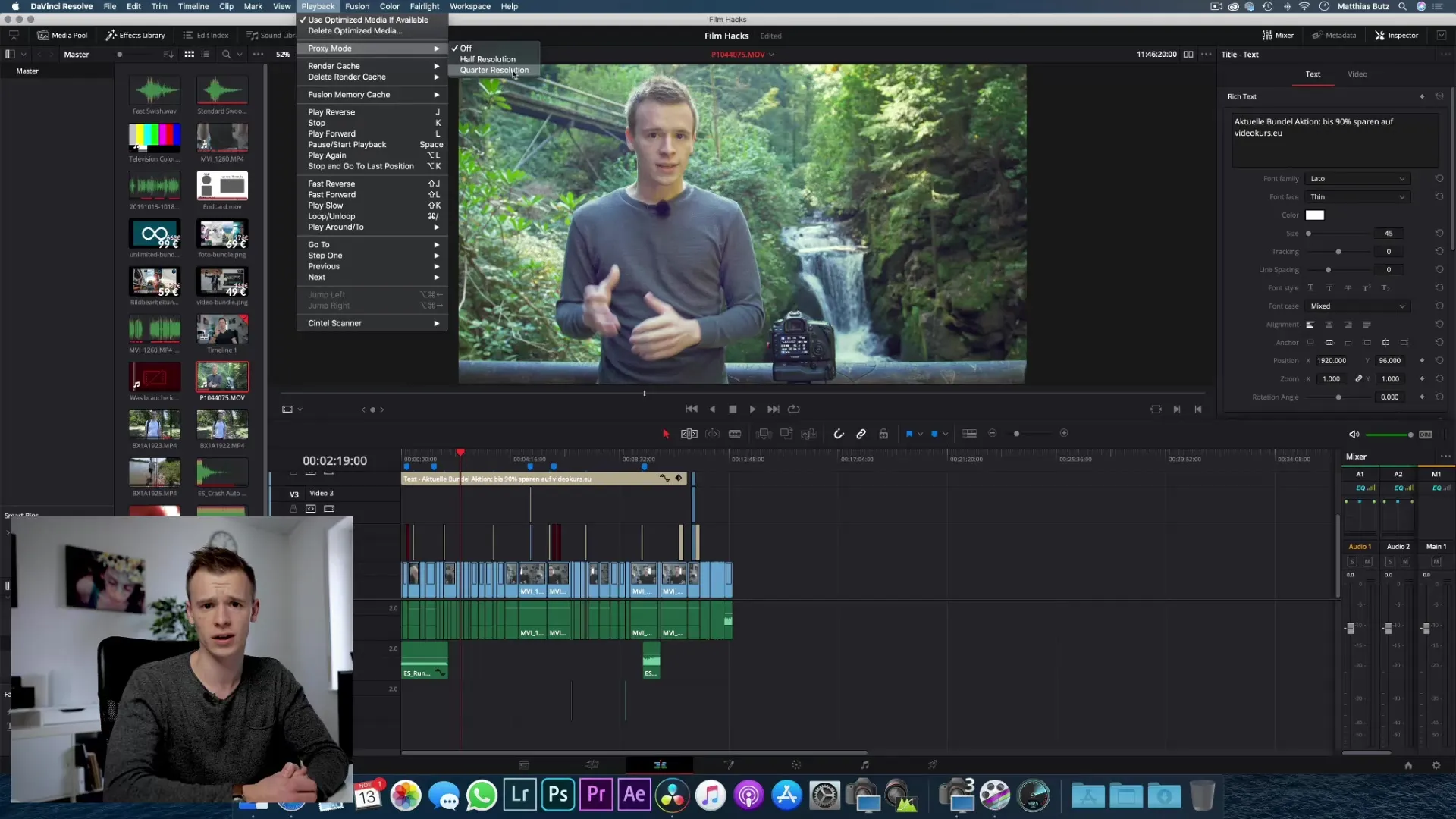When you dive into the world of video editing, the right raw material is crucial. In this tutorial, you'll learn how to obtain high-quality raw material to create your own videos in DaVinci Resolve. I've compiled some data for you, so you can realistically apply the techniques I present in the course, even if you don't have your own footage yet.
Main Findings
- You can use the provided raw material to gain practical experience.
- The speed and capacity of your hard drive are crucial for smooth video editing.
- Creating proxy files can improve performance during editing, especially on lower-powered systems.
Step-by-Step Guide
1. Download Raw Material
Start by obtaining the raw material that I have prepared for this course. You will find various videos that you can use for practice. It is important to establish a foundation to really understand the techniques of video editing. You can save the material on your own hard drive and start editing.

2. Check Your Hard Drive Speed
Before you start editing, you should ensure that your hard drive is fast enough to process the raw material smoothly. You can use the Disk Speed Test from Blackmagic for this. This software helps you check whether your internal SSD or an external hard drive is fast enough to handle the video material.

3. Test Read and Write Speeds
Start the Disk Speed Test and select the hard drive you want to test. Note the speeds for reading and writing. For video editing, speeds of at least 130 MB/s or more are recommended to ensure smooth operation.

4. External Hard Drives and Their Use
If your internal hard drive does not provide enough space or speed, you can use an external Thunderbolt hard drive. While these are slower than internal SSDs, they are still suitable for certain video projects. Again, perform the speed test on this drive to ensure it meets your requirements.

5. Alternatives to Hard Drive Storage
If you regularly want to process large amounts of data, consider investing in a NAS (Network Attached Storage). It allows you to store large amounts of data centrally and offers higher speed and security for long-term projects.

6. Create Proxy Files for Efficient Work
If you find that your hardware is not powerful enough, create proxy files that have a lower resolution. Go to the playback settings in DaVinci Resolve and activate the proxy mode. You can choose between half and quarter resolution, depending on the requirements of your project.

7. Generate Optimized Media
To create proxy files, right-click on the desired video file and select "Generate Optimized Media." DaVinci Resolve will then create a copy of the video in the lower resolution you chose, making editing smoother.

8. Monitor Playback Performance
When working with proxies, pay attention to the number of frames per second that your system can deliver. Check if playback is smooth and has no stuttering. This helps you ensure that you are working efficiently with your material.

9. Export Your Project
When you finish editing, export your project. DaVinci Resolve will revert to the original video file and render the final product in full quality. This may take some time depending on the size of the project and the performance of your system.

Summary - DaVinci Resolve Tutorial: Download Raw Material
In this tutorial, you learned how to obtain the raw material for your entry into DaVinci Resolve and how to check the performance of your hard drive. Additionally, you got to know the creation of proxy files to optimize your workflow and improve your editing work. With this foundation, you are ready to edit your videos creatively and efficiently.
Frequently Asked Questions
What do I need to work with DaVinci Resolve?Suitable hardware, DaVinci Resolve, and raw material to practice.
How can I check the speed of my hard drive?Use the Disk Speed Test from Blackmagic to test read and write speeds.
What are proxy files?Proxy files are copies of video files in a lower resolution that make editing easier.
How do I export my finished project?After finishing your edit, you can export the project in DaVinci Resolve by going to "Render."
Are external hard drives suitable for video editing?Yes, as long as they provide sufficient speeds and enough storage space.


